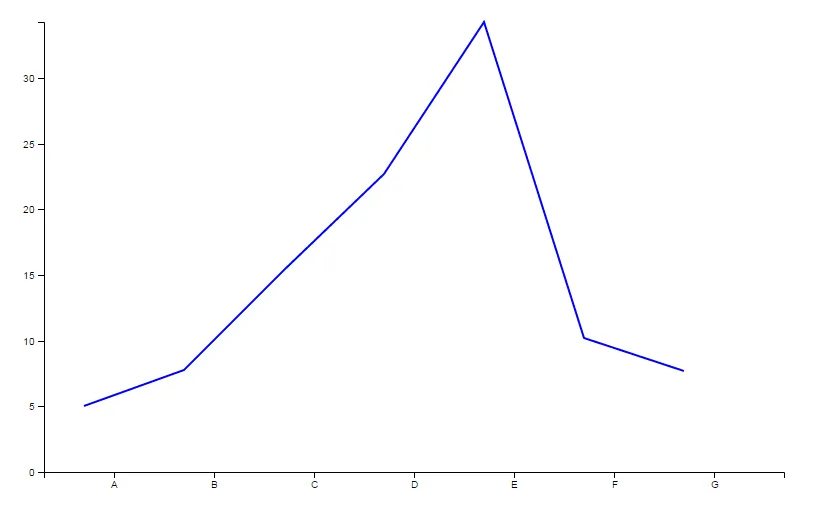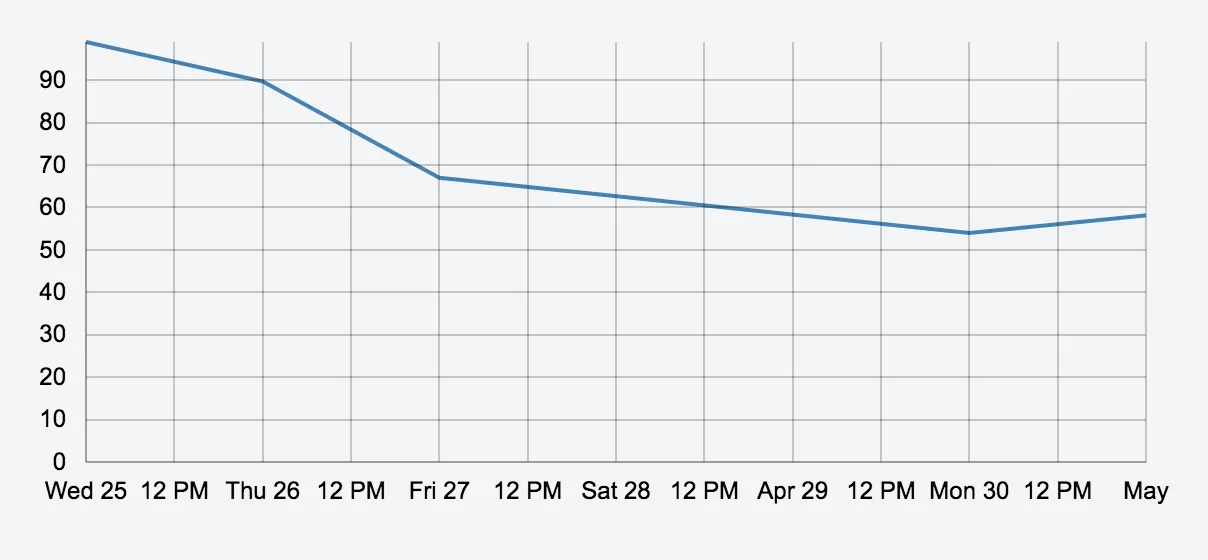在下面这个简单的折线图中,我想要在x轴和y轴上添加网格。有人能帮我实现吗?
代码片段:
<html>
<head>
<script src="https://cdnjs.cloudflare.com/ajax/libs/angular.js/1.4.12/angular.min.js"></script>
<script src="https://cdnjs.cloudflare.com/ajax/libs/jquery/3.1.1/jquery.min.js"></script>
<script src="https://cdnjs.cloudflare.com/ajax/libs/d3/4.3.0/d3.min.js"></script>
</head>
<body ng-app="myApp" ng-controller="myCtrl">
<svg></svg>
<script>
//module declaration
var app = angular.module('myApp',[]);
//Controller declaration
app.controller('myCtrl',function($scope){
$scope.svgWidth = 800;//svg Width
$scope.svgHeight = 500;//svg Height
//Data in proper format
var data = [
{"letter": "A","frequency": "5.01"},
{"letter": "B","frequency": "7.80"},
{"letter": "C","frequency": "15.35"},
{"letter": "D","frequency": "22.70"},
{"letter": "E","frequency": "34.25"},
{"letter": "F","frequency": "10.21"},
{"letter": "G","frequency": "7.68"},
];
//removing prior svg elements ie clean up svg
d3.select('svg').selectAll("*").remove();
//resetting svg height and width in current svg
d3.select("svg").attr("width", $scope.svgWidth).attr("height", $scope.svgHeight);
//Setting up of our svg with proper calculations
var svg = d3.select("svg");
var margin = {top: 20, right: 20, bottom: 30, left: 40};
var width = svg.attr("width") - margin.left - margin.right;
var height = svg.attr("height") - margin.top - margin.bottom;
//Plotting our base area in svg in which chart will be shown
var g = svg.append("g").attr("transform", "translate(" + margin.left + "," + margin.top + ")");
//X and Y scaling
var x = d3.scaleBand().rangeRound([0, width]).padding(0.4);
var y = d3.scaleLinear().rangeRound([height, 0]);
x.domain(data.map(function(d) { return d.letter; }));
y.domain([0, d3.max(data, function(d) { return +d.frequency; })]);
//Final Plotting
//for x axis
g.append("g")
.call(d3.axisBottom(x))
.attr("transform", "translate(0," + height + ")");
//for y axis
g.append("g")
.call(d3.axisLeft(y))
.append("text").attr("transform", "rotate(-90)").attr("text-anchor", "end");
//the line function for path
var lineFunction = d3.line()
.x(function(d) {return x(d.letter); })
.y(function(d) { return y(d.frequency); })
.curve(d3.curveLinear);
//defining the lines
var path = g.append("path");
//plotting lines
path
.attr("d", lineFunction(data))
.attr("stroke", "blue")
.attr("stroke-width", 2)
.attr("fill", "none");
});
</script>
</body>
</html>
结果:
请帮我找到如何在图表的x轴和y轴上添加网格线。
提示:如果您需要更详细的说明,请提供相关代码或软件名称。

